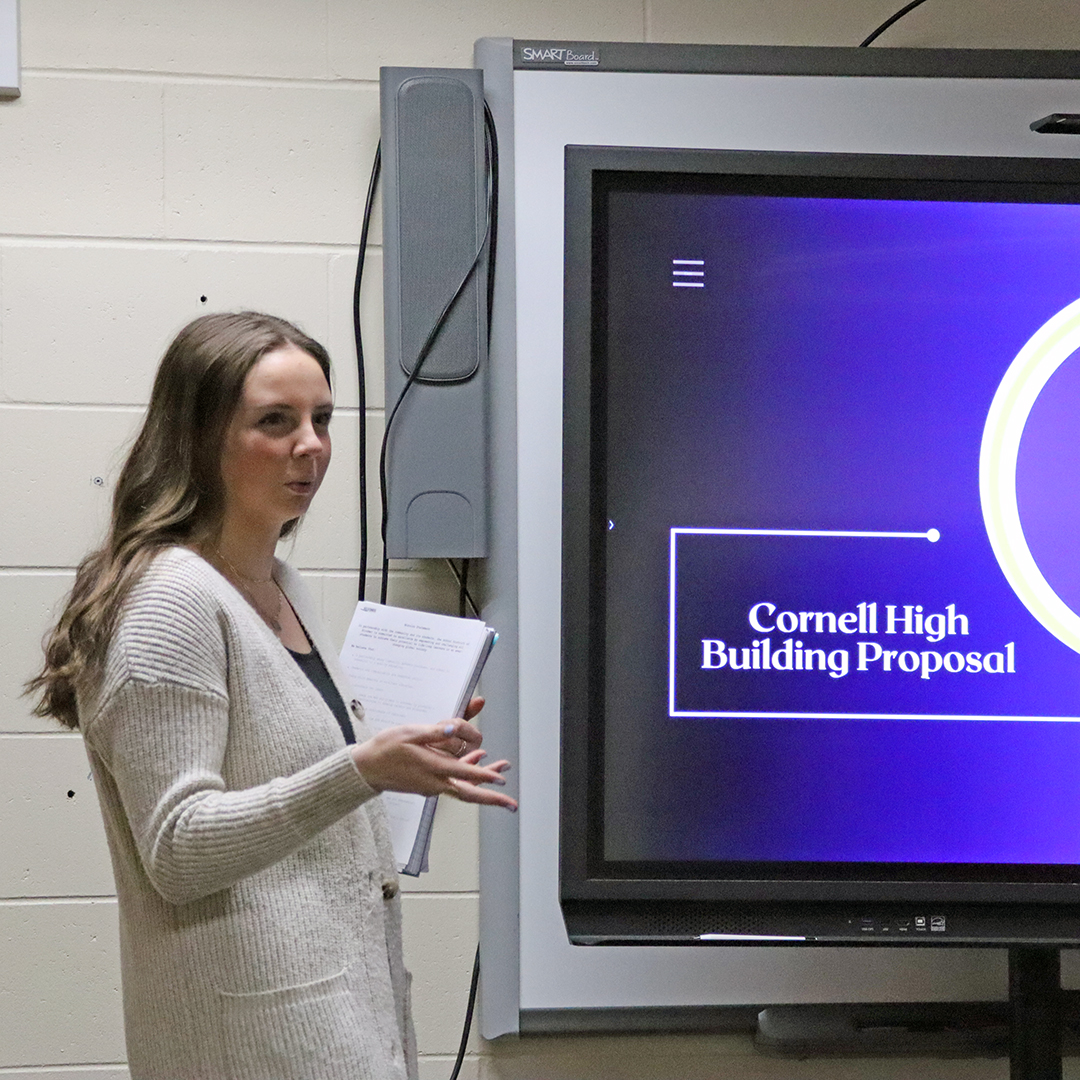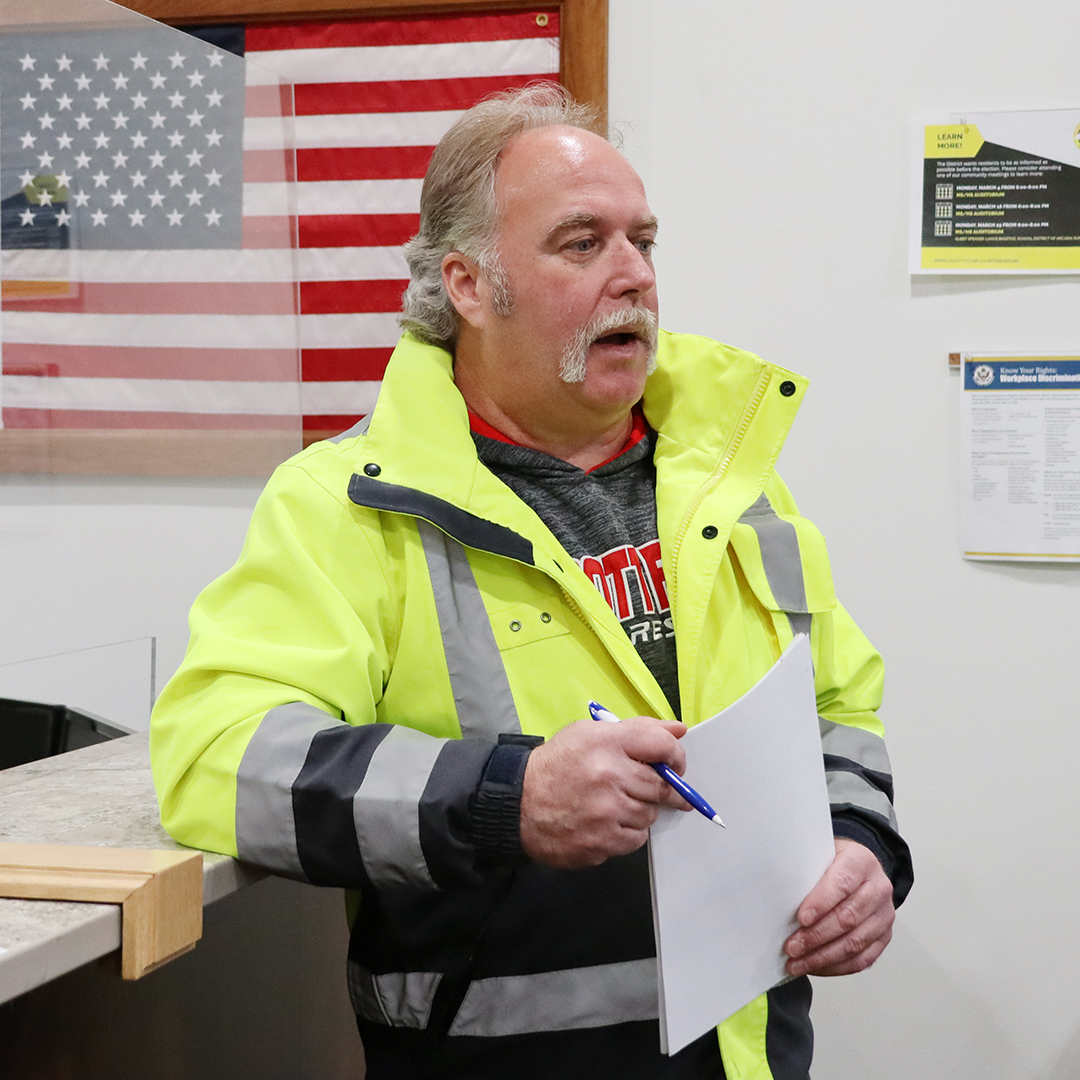Fresh lettuce a staple with hydroponics lab


By Ginna Young
Lettuce seedlings are thriving, as well as a few herbs, at hydroponic units in the Lake Holcombe School ag classes. The fresh produce is grown using a nutrient-rich water cycle, with LED lighting for the plants. Once the plants reach maturity, they are harvested and used in school meal preparation for the students.
Fresh produce is a must for any school, but to be able to grow your own, is huge asset. This year, thanks to a grant from Marshfield Clinic, Lake Holcombe School installed two hydroponic units for the ag classes.
“I then decided, since it came with some curriculum, to convert it into an actual semester course,” said ag teacher Kent Dorney.
Assembly of the units started with two, 15-gallon water tanks at the bottom, that hold the nutrients and water. There is a pump that sends the nutrient-rich water to the top of six panels and the constantly cycling water then trickles down the insides of the panels, that lead back to the water reservoir tanks.
With three, 10,000 lumen LED lightbulbs that are set on an automatic timer, the plants have the needed light to grow. Seeds are planted in “snap-caps,” which are usually pre-planted two weeks prior to placing them into the hydroponic unit. For example, lettuce is planted in wool mesh “plugs,” then soaked in water and placed in the greenhouse.
“This helps to promote a faster germination rate,” said Dorney.
Several days before the classes transplant the lettuce, the students make sure that the hydroponic unit is at the nutrient and pH levels required for the lettuce to grow properly. The nutrients need to be about 859 ppm (parts per million) and pH levels at 6 - 6.5.
After that, the seedling plugs are placed into the hydroponic unit in every other snapcap. Lastly, the classes check the unit’s water, nutrient and pH levels daily, and adjust accordingly.
“Two weeks prior to us harvesting, we then plant an additional 160 new lettuce seeds to be ready to be placed into the hydroponic unit, after we harvest the current produce,” said Dorney. “We like to clean the units every other harvest (every month and a half).”
Students have to collect, record and analyze a lot of data when operating the units, while the experience of growing their own food gives the classes a sense of accomplishment.
Once the produce is ready to be harvested, several students pull the lettuce out of the unit and separate the roots from the lettuce. The roots are tossed into a composting bucket and the lettuce is taken in food-grade containers to the cafeteria.
From there, the cafeteria then uses the lettuce in a variety of different lunches for the students during the school year.
The ag classes have also grown other plants than lettuce in the hydroponic units, such as tomatoes, herbs and green beans.
“They all worked very well in the hydroponic units,” said Dorney. “I know of people doing strawberries and other fruits in their units, but I have not attempted that yet.”
The initial cost of the units is very expensive, as well as any replenishing kits, but in the long run, it costs about $35-$50 a month, to operate the units. For Dorney’s way of thinking, the start-up costs are worth it, as it provides students with fresh edible foods.
“Being in a lower economic area, fresh lettuce is not usually an item that makes it on the top of the grocery list,” said Dorney.
When salad bars for school lunches went away (because of COVID-19), growing the leafy vegetable in-house, means the district can have it back again with certain meals.
“I can not grow lettuce fast enough to feed all the students,” said Dorney. “It is a good feeling to have, knowing that the students enjoy growing it, as well as eating it.”
[caption id="" align="alignnone" width="492"] Lettuce seedlings are thriving, as well as a few herbs, at hydroponic units in the Lake Holcombe School ag classes. The fresh produce is grown using a nutrient-rich water cycle, with LED lighting for the plants. Once the plants reach maturity, they are harvested and used in school meal preparation for the students. Photo by Ginna Young[/caption]
Lettuce seedlings are thriving, as well as a few herbs, at hydroponic units in the Lake Holcombe School ag classes. The fresh produce is grown using a nutrient-rich water cycle, with LED lighting for the plants. Once the plants reach maturity, they are harvested and used in school meal preparation for the students. Photo by Ginna Young[/caption]




